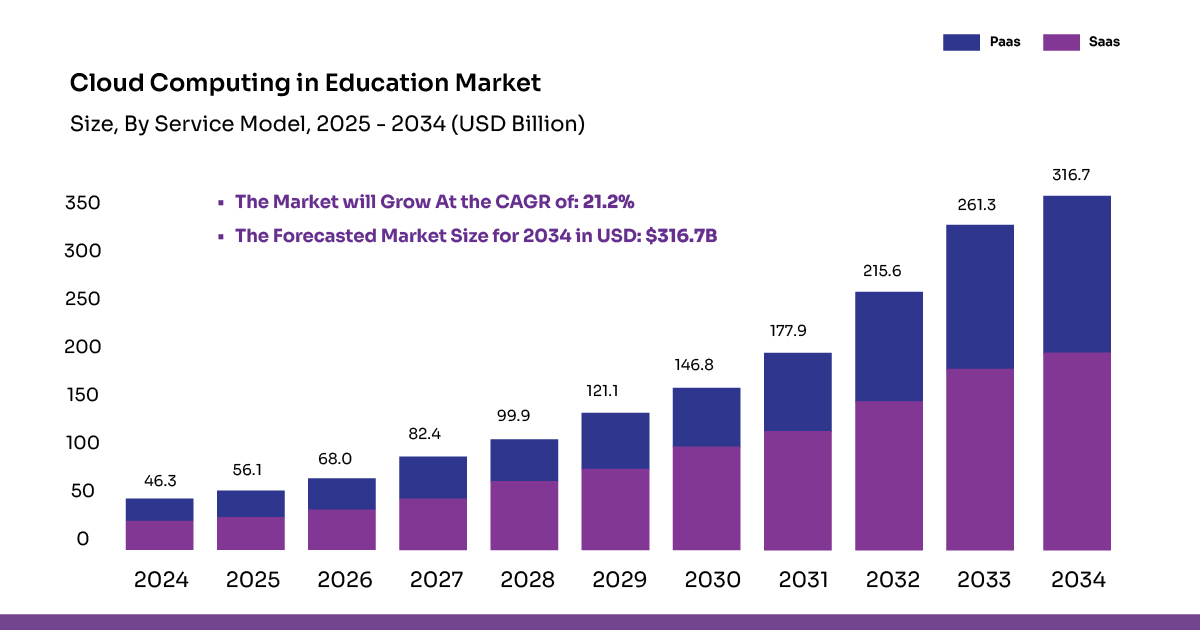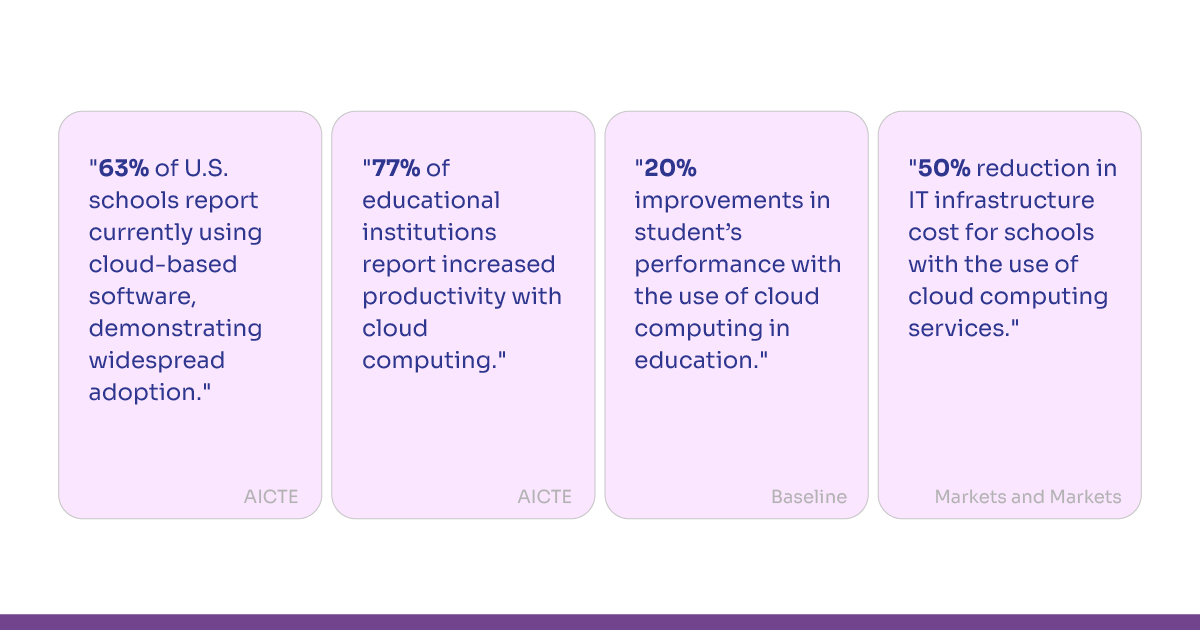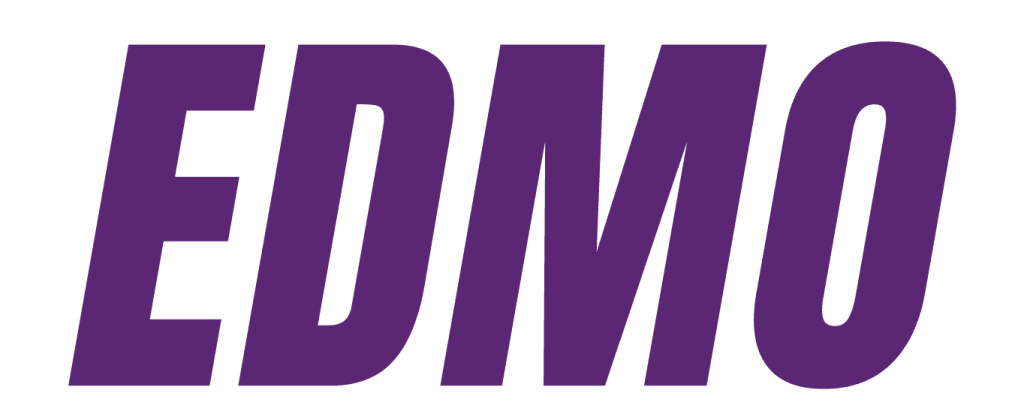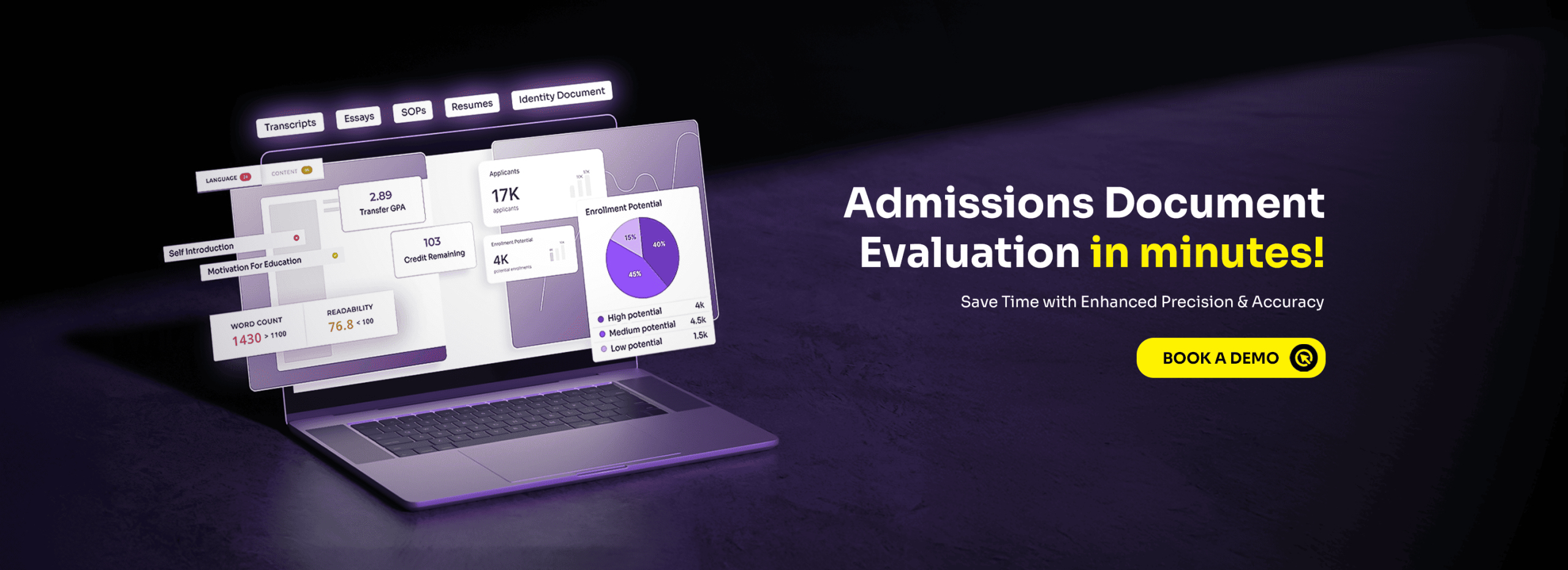As universities aim to boost efficiency and meet student needs, the benefits of cloud software for higher education are clear. A D2L survey found that cloud-based admissions systems cut processing time by 40% and increased student satisfaction by 25%. From faster application handling to improved engagement, cloud solutions are transforming enrollment.
Table Of Contents
The cloud computing market in education is booming and is expected to reach $316.7 billion by 2034. Today, 88% of higher education institutions have shifted many of their systems to the cloud, with nearly 80% reporting results that exceed their expectations. These facts highlight the growing benefits of cloud software for higher education, helping universities improve efficiency, student engagement, and overall enrollment processes.

Role of Cloud Software in University Enrollments
Cloud software for higher education streamlines admissions by replacing manual tasks with automated systems, allowing universities to handle large volumes of applications quickly and accurately.
1. Centralized Application Management
Cloud platforms allow institutions to collect, manage, and review all applications in a single dashboard. Staff can easily filter candidates, assign reviewers, and track application status in real-time.
2. Streamlined Communication
Built-in messaging tools help admissions teams send automatic updates, interview invitations, reminders, and follow-ups. This reduces drop-offs and improves the applicant experience.
3. Remote Accessibility
Admissions officers, faculty reviewers, and IT support staff can access the system from anywhere, ensuring continuity and flexibility, especially during peak admission seasons.
4. Real-Time Collaboration
Departments such as admissions, marketing, finance, and academics can work together easily on cloud platforms, breaking down barriers and speeding up decisions.
Features of Cloud Software That Boost Enrollments in Universities
Cloud software for higher education offers powerful features designed to simplify and speed up the enrollment process.
| Feature | Description |
| Automated Workflows | Speeds up tasks like sorting applications and checking documents automatically. |
| CRM Integration | Tracks student interest and helps follow up with leads more effectively. |
| Analytics Dashboard | Shows key metrics like conversion rates and sources in easy-to-read charts. |
| Email & SMS Automation | Sends timely, personalized updates to keep students informed. |
| Document Management | Lets students upload documents online, removing the need for physical submission. |
Benefits of Cloud Software for Higher Education in Enrollments
Cloud software offers many advantages that help universities attract, manage, and enroll more students efficiently.
1. Faster Application Processing Through Automation
Cloud-based automation speeds up university admissions by cutting down manual tasks like data entry and document checks. Automated workflows enable faster and more accurate processing with fewer errors. For instance, the University of Melbourne saved 10,000 labor hours annually by automating 22 processes. Tools like Edmo’s Document Intelligence enhance this by automatically reading and verifying transcripts, further speeding up reviews.
2. Real-Time Analytics for Better Decision-Making
Cloud platforms provide real-time data insights that help universities track important metrics like inquiry sources, drop-offs, and conversion rates. Admission officers and leaders can use easy-to-read dashboards to monitor enrollment trends. Cloud Tech News survey found 83% of education IT leaders say cloud computing helps them make smarter admission decisions.
3. Scalability and Global Reach
Cloud platforms are easily scalable—whether a university receives 500 or 50,000 applications, the system adjusts automatically without causing downtime or performance lags. This flexibility is especially valuable during peak admission periods. By 2025, nearly 80% of U.S. higher education institutions are expected to adopt cloud applications for admissions.
4. Personalized Communication and Engagement
Using integrated CRM tools, universities can send tailored messages to prospective students based on their interests, application status, and location. This targeted communication boosts engagement and improves conversion rates. Nearly 70% of prospective students say personalized outreach significantly influences their college choice.
5. Cost Efficiency and Reduced IT Burden
Cloud software cuts university costs by lowering the need for hardware, maintenance, and manual work. By shifting to cloud-based systems, institutions can reduce IT infrastructure costs by up to 50%, allowing them to invest more in student services and innovation. It also boosts system reliability, minimizes downtime, and lets IT teams focus on strategic projects.

6. Better Teamwork Across Departments
Cloud platforms help different university departments like admissions, financial aid, and student services work together smoothly. Sharing data in real time breaks down barriers, makes processes faster, and improves communication, so students get the help they need on time. A survey by Campus Management found that 63% of admissions teams feel cloud technology helps them better meet student expectations.
7. Support for Advanced Technologies
Cloud platforms easily integrate with AI and machine learning tools, helping universities use smart solutions like chatbots and predictive analytics. For example, the University of Arizona used predictive analytics to identify students at risk of failing, and with timely support, they improved pass rates by 13%.
8. Improved Cybersecurity
Cloud software helps universities protect student and staff data with advanced security features like encryption, multi-factor authentication, and real-time threat monitoring. These tools reduce the risk of cyberattacks and data loss. According to IBM’s 2024 report, the average cost of a data breach is $4.88 million, showing how important strong cybersecurity is.
The benefits of cloud software for higher education are reshaping enrollment management by offering faster, smarter, and more cost-effective solutions.
Challenges of Cloud Computing in Higher Education
Cloud computing offers many benefits to universities, but there are key challenges institutions need to manage:
1. Security
Universities handle sensitive data of students and staff, making them targets for cyberattacks. In fact, 62% of UK higher education institutions report breaches or attacks weekly. Though the cloud is usually safer than on-site servers, backing up, encrypting data, and having a recovery plan are still essential.
2. Cost
Though cloud services are usually cheaper than traditional systems, hidden fees and tight budgets make cost management difficult. Educational institutions must carefully choose the right plans and monitor cloud usage to avoid paying for unused storage or services, as costs can quickly add up.
3. Integration
Many universities use old systems that are hard to replace. Connecting these systems to the cloud can be tricky, especially if data formats don’t match. Moving to the cloud slowly and picking providers that support many file types can help.
4. Governance
Using cloud services means trusting outside providers, which means less control over data security and rules. Universities need clear agreements with providers and strong policies to keep data safe and follow regulations.
Conclusion
Cloud software is changing how universities handle enrollments by making things faster, easier, and better for students. The benefits of cloud software for higher education include automation of repetitive tasks, access to real-time data, personalized messaging, and significant cost savings. More than 200 institutions trust EDMO, a handy plugin for your CRM that sends personalized messages, reads transcripts, and encourages students to enroll, helping you get more students easily.
Also Read: Why Higher Ed Needs to Rethink the Admissions Funnel
Enhancing Funnel Conversion for a High School Equivalency Diploma Certification Body with EDMO
5 Key Trends in Enrollment That EVERY University Executive Should Know
Franklin & Marshall Partners with EDMO to Boost Student Engagement and Admissions










No comments yet. Be the first to comment!
Leave a Comment